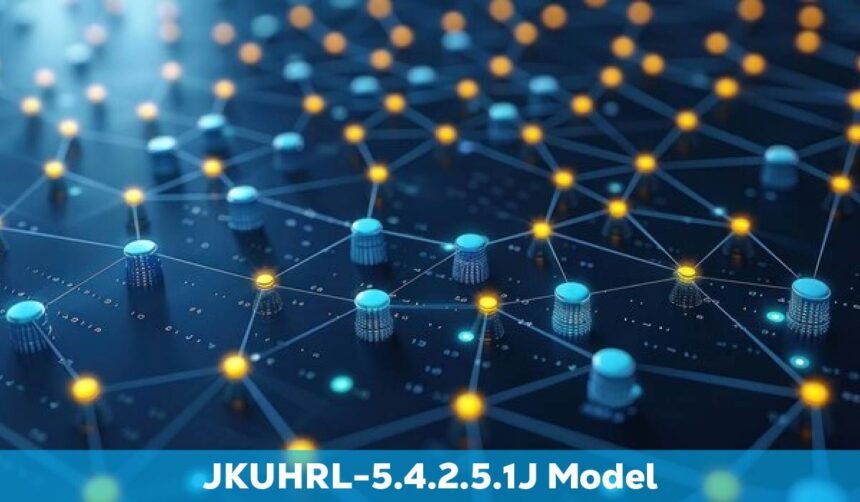Introduction to the JKUHRL-5.4.2.5.1J Model
In the ever-evolving landscape of technology, particularly in the field of data processing and artificial intelligence, the emergence of the JKUHRL-5.4.2.5.1J model represents a significant milestone. This model is not merely an incremental update to existing frameworks but a comprehensive overhaul that introduces cutting-edge advancements in real-time data processing, artificial intelligence, and machine learning. Designed to cater to the high demands of industries ranging from healthcare to finance, and manufacturing to smart city development, the JKUHRL-5.4.2.5.1J model is built to handle vast amounts of data with unprecedented accuracy and speed.
Its development is the result of extensive research and collaboration among leading data scientists and engineers, aiming to push the boundaries of what modern data processing systems can achieve. This article delves deep into the architecture, features, applications, and transformative potential of the JKUHRL-5.4.2.5.1J model, providing a comprehensive overview that highlights its role as a game-changer in technological advancement.
Revolutionary Architecture and Modular Design
At the heart of the JKUHRL-5.4.2.5.1J model lies its revolutionary architecture, characterized by a modular design that promotes scalability and flexibility. This model breaks away from traditional data processing systems by incorporating a multi-layered structure that allows for independent upgrades and enhancements in each module without disrupting the entire system. Each layer of the model is designed with specific functionalities in mind, from data acquisition to processing, analysis, and security.
The data acquisition layer is adept at gathering information from a multitude of sources, including Internet of Things (IoT) devices, online transactions, and corporate databases, ensuring that the data is comprehensive and representative of real-world complexities. Following this, the processing core uses advanced algorithms and machine learning techniques to analyze the data at speeds previously unattainable, while the security layer employs state-of-the-art encryption methods to protect data integrity and privacy.
Enhanced Real-Time Data Processing Capabilities
One of the standout features of the JKUHRL-5.4.2.5.1J model is its ability to process data in real-time, a critical requirement in today’s fast-paced business environment. This capability ensures that decision-makers have access to the latest information without delays, allowing for more accurate and timely decisions. The model achieves this through the use of sophisticated algorithms that can quickly sift through and analyze large datasets, identifying patterns, trends, and anomalies almost instantaneously. This real-time processing power is particularly beneficial in sectors like financial services, where even milliseconds can mean the difference between profit and loss, and healthcare, where it can significantly impact patient outcomes through timely interventions.
Advanced AI and Machine Learning Integration
The integration of artificial intelligence and machine learning is another area where the JKUHRL-5.4.2.5.1J model excels. By leveraging deep learning, neural networks, and other AI methodologies, the model can learn from past data, make intelligent predictions, and continuously improve its accuracy and efficiency through feedback mechanisms. This self-learning capability enables the model to adapt to new challenges and changes in data patterns without human intervention. Applications of these AI capabilities are vast, ranging from automated fraud detection systems in banking to personalized treatment plans in healthcare, showcasing the model’s versatility across different fields.
Applications Across Various Industries
The implications of the JKUHRL-5.4.2.5.1J model for industry are profound. In healthcare, it enhances diagnostic accuracy and operational efficiency in hospitals by processing patient data faster and more accurately. In finance, it revolutionizes risk management and fraud detection by analyzing transaction patterns and flagging discrepancies in real-time. In manufacturing, it optimizes production lines and reduces downtime by predicting equipment failures before they occur. Furthermore, in the burgeoning field of smart cities, the model contributes to the management of everything from traffic systems to public safety networks, significantly improving urban living conditions.
Read Also: FootballPros.io: The Ultimate Online Destination for Football Fans Worldwide
Challenges and Future Prospects
Despite its numerous advantages, the implementation of the JKUHRL-5.4.2.5.1J model does not come without challenges. High initial investment costs, the complexity of integration with existing systems, and the need for specialized skills to manage and maintain the system are significant hurdles. However, ongoing advancements in technology and decreasing costs of components are likely to mitigate these challenges over time. Looking ahead, the future developments of the JKUHRL-5.4.2.5.1J model include further enhancements in AI capabilities, integration with emerging technologies such as blockchain for enhanced security, and expanded applications in new industries such as renewable energy and environmental monitoring.
Conclusion
The JKUHRL-5.4.2.5.1J model stands as a testament to the strides being made in data processing technology. With its robust architecture, real-time processing capabilities, and advanced AI integration, it is set to redefine the paradigms of numerous industries. As businesses and societies continue to embrace digital transformation, the JKUHRL-5.4.2.5.1J model will play a pivotal role in shaping the future, making it an essential subject of study and utilization in the years to come.
This in-depth exploration underscores the model’s significance and the broad spectrum of its applications, affirming its position as a cornerstone of modern data-driven decision-making. As the model continues to evolve and integrate with cutting-edge technologies, its impact is expected to expand further, solidifying its role as a critical tool in the arsenal of businesses aiming to thrive in an increasingly data-centric world.
FAQs About JKUHRL-5.4.2.5.1J model
1. What is the JKUHRL-5.4.2.5.1J model?
The JKUHRL-5.4.2.5.1J model is an advanced data processing system that integrates cutting-edge technologies in artificial intelligence (AI), machine learning, and real-time data analysis. It’s designed to handle and analyze large volumes of data with high efficiency and accuracy, making it suitable for various industries including finance, healthcare, manufacturing, and smart city development. Its modular architecture allows for scalable solutions tailored to specific organizational needs.
2. How does the JKUHRL-5.4.2.5.1J model improve real-time data processing?
The JKUHRL-5.4.2.5.1J model enhances real-time data processing by utilizing high-speed algorithms that can process and analyze data as it is received. This capability ensures that businesses and organizations can make informed decisions quickly, based on the most current data available. The system’s efficiency in processing real-time data is particularly valuable in dynamic environments where conditions change rapidly, such as financial trading floors or emergency medical services.
3. What are some key features of the JKUHRL-5.4.2.5.1J model?
Key features of the JKUHRL-5.4.2.5.1J model include:
Advanced AI and Machine Learning Capabilities: The model uses sophisticated algorithms to enable deep learning, predictive analytics, and automated decision-making.
Modular Design: This allows organizations to customize and scale their data processing capabilities as their needs evolve.
Enhanced Security Measures: The model incorporates robust encryption and security protocols to protect sensitive data and ensure compliance with international standards and regulations.
User-Friendly Interface: Designed for ease of use, allowing users to manage and analyze data without needing extensive technical expertise.
4. In which industries is the JKUHRL-5.4.2.5.1J model most effective?
The JKUHRL-5.4.2.5.1J model is versatile and can be adapted to a wide range of industries. It is particularly effective in:
Healthcare: For predictive diagnostics and patient data management.
Finance: For real-time risk assessment and fraud detection.
Manufacturing: For optimizing production lines and predictive maintenance.
Smart Cities: For traffic management and public safety monitoring. Its ability to process and analyze large datasets in real time makes it ideal for any sector that relies on timely and accurate data insights.
5. What are the main benefits of implementing the JKUHRL-5.4.2.5.1J model in an organization?
Implementing the JKUHRL-5.4.2.5.1J model can significantly enhance an organization’s operational efficiency and decision-making processes. Benefits include:
Improved Decision Accuracy: By providing real-time insights and predictions, it helps organizations make more informed decisions.
Increased Productivity: Automates complex data analysis tasks, allowing staff to focus on strategic activities.
Cost Efficiency: Reduces operational costs by minimizing errors and speeding up the data processing workflow.
Scalability: Can easily adapt to increased data demands without the need for extensive system overhauls.






